Lights out for Herschel

The end is nigh for the European Herschel satellite. The liquid helium that cools the instruments of what is currently the biggest space telescope will run out shortly, nearly four years after its launch. One of the three instruments, the Heterodyne Instrument for the Far-Infrared (HIFI), was built in the Groningen lab of the Netherlands Institute for Space Research (SRON). As Mission Scientist, University of Groningen astronomer Peter Barthel is responsible for the scientific output of the entire Herschel mission.
It took years to design and build HIFI , a spectrometer that is capable of very accurate analysis of the far infrared to submillimeter radiation that Herschel observes. Principal Investigator Frank Helmich was responsible for building HIFI and using the Guaranteed Time allocated to the instrument team. The radiation observed by Herschel is almost invisible from Earth, as it is absorbed by water vapour in the atmosphere. Only the new radio telescope, ALMA, located at a very high altitude in a dry desert in Chile, can capture some of the lowest frequencies.
There are a number of reasons to study far infrared or submillimeter light. It tells you about galaxy, star and planet formation, and it is possible to detect water at these wavelengths. So what have we learned now that we have reached the end of the observation phase?
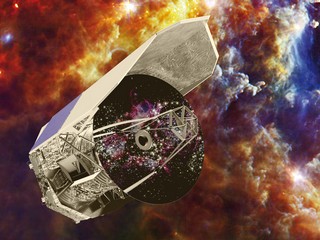
But first, some mission statistics!
Herschel has made some 35,000 observations in over 22,000 hours of science observing, amassing over 25,000 hours of science data from about 600 observing programmes. A further 2,000 plus hours of science calibration observations supplement the rich dataset. Herschel can obtain 25,000 hours of data from 22,000 hours of operation, as the two cameras (SPIRE and PACS) can observe in parallel mode.
So far, around 2,500 astronomers have successfully submitted observation proposals. Just six months after the start of the mission, a first round up of results already filled over 1000 pages of a volume the size of a telephone book. The analysed results would now fill four or five such volumes. And the data from the last six months hasn’t even been released to the scientists!
With this type of mission, the output of papers and PhD theses continues to swell after the observations have stopped. And what’s more, the data will be made available to the entire astronomical community in the next phase of the mission. Joe Astronomer will be able to browse through the data in the Herschel Archive and use it for his own research. This is why the five Mission Scientists will continue their work for at least five more years, and the HIFI Instrument Control Center for the next three years.
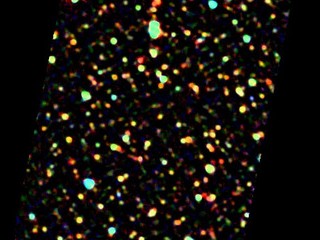
The results
Herschel found a surprisingly high number of galaxies with vigorous star formation in the early universe (around 5 billion years after the Big Bang). These galaxies had not previously been observed, as they are full of dust. Dust obscures visible light, but reasonable amounts of infrared light can pass through.
If you can look through dust clouds this helps significantly when observing the formation of stars and planets, because this happens inside dust clouds or rings. Herschel can observe these processes and measure the spectra of different molecules involved. And these spectra can help understand the physical and chemical processes that are taking place.
Carbon monoxide, for example, can absorb energy from ultraviolet or X-ray radiation, and will then emit this energy in a way that is specific to each type of radiation. UV or X-ray radiation can be involved in many processes. UV comes from the corona of a star, whereas X-ray radiation is emitted by matter as it is sucked in by the massive black holes that most galaxies have at their centre. It is also emitted by dust that accretes as stars form. By measuring the emissions of carbon monoxide, it is possible to use high spatial resolution to see how great the role is of either UV or X-rays.
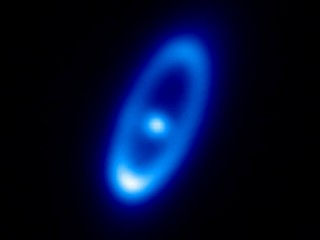
More results
One of the prime goals of Herschel was to check for water. And the answer is yes, there is water in the universe. Not in oceans or pools, but in clouds of H2O molecules that are free-floating or bound to dust grains. Frozen clouds usually, as the universe is a rather cold environment. Water is one of the most abundant molecules in star-forming regions and just like carbon monoxide it can be used as a marker, in this case for the temperature history of a cloud.
HIFI discovered abundant water in a planet-forming disc, where water vapour emanates from ice on dust grains. This was the first evidence of water in planet-forming regions and may help us to understand how the Earth has become a ‘blue planet’.
The water observations made by Herschel are a legacy that will probably be unsurpassed in the next few decades. No other satellite in the foreseeable future will even equal Herschel in this respect.
One more result, just because it is so photogenic: a dust ring around the Fomalhaut star. This ring is produced by the constant collision of thousands of comets per day.
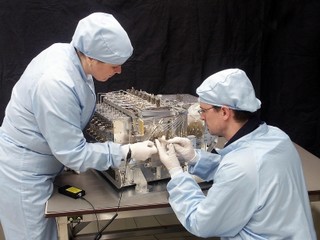
All very exciting but…
Astronomers are licking their lips at all this new data, but it won’t increase agricultural output or cure the common cold. So why do we send satellites into space? After all, the entire Herschel mission has cost a little over one thousand million euros, including rocket, launch and all three instruments. HIFI carried a price tag of EUR 210 million, 70 million of which came from the Netherlands.
The pay-off of such a mission is primarily the amazing science, but it has also kept a high-tech infrastructure going with hundreds of young scientists working to make the impossible possible. When the specifications for HIFI were determined they were impossible. Years of research made them possible, and more years of building and testing made them a fact. As already mentioned, HIFI was built in the Netherlands, mostly in Groningen. Scientists, engineers and technicians started working on the project in around 1999 (even earlier if you include the planning phase).
At the height of building activity, around 2005 to 2006, some 300 people worldwide were working on HIFI, a little under a third of them at SRON. Many of those who worked on this project have moved on to industry, consulting firms or research institutions, having learned to work to the highest possible standards and gained experience of working in international teams. Some have stayed at SRON and are now working on new projects.
Some of the building and development was carried out by small and medium-sized enterprises often located in the northern Netherlands, and materials were also purchased locally. And HIFI may actually help agriculture, as the terahertz frequency radiation that is part of its design can be used to check flower bulbs for diseases. It may also help aircraft construction, because it can be used to check the construction materials for cracks. The SRON valorization office is constantly seeking terrestrial uses for space technology. But the common cold will have to wait. Perhaps, after the next project…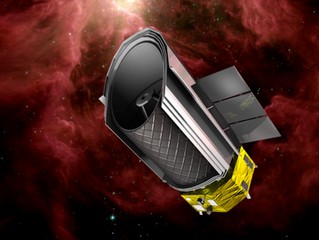
To be continued
What will happen when the last drop of helium evaporates and the instruments heat up and cease to function? For the astronomers it means delving into the vast mountain of data, but most of the technical crew is already looking ahead. SRON received EUR 18 million in funding last year from the National Roadmap for Research to design SAFARI (SPICA FAR-infrared Instrument), an instrument for the Japanese SPICA infrared satellite. Just like HIFI, SAFARI is an infrared spectrometer, but this time with imaging capabilities.
Spica is still in the design stage, but if all goes as planned it might be launched a little less than ten years from now. Another mission is in the very early stages of preparation and will launch in 2035. So there’s plenty of work to do.
Many thanks to Peter Barthel, Frank Helmich, Pieter Dieleman and Rowin Meijerink for all the information they provided.
| Last modified: | 23 December 2016 2.23 p.m. |
More news
-
10 June 2024
Swarming around a skyscraper
Every two weeks, UG Makers puts the spotlight on a researcher who has created something tangible, ranging from homemade measuring equipment for academic research to small or larger products that can change our daily lives. That is how UG...
-
21 May 2024
Results of 2024 University elections
The votes have been counted and the results of the University elections are in!

